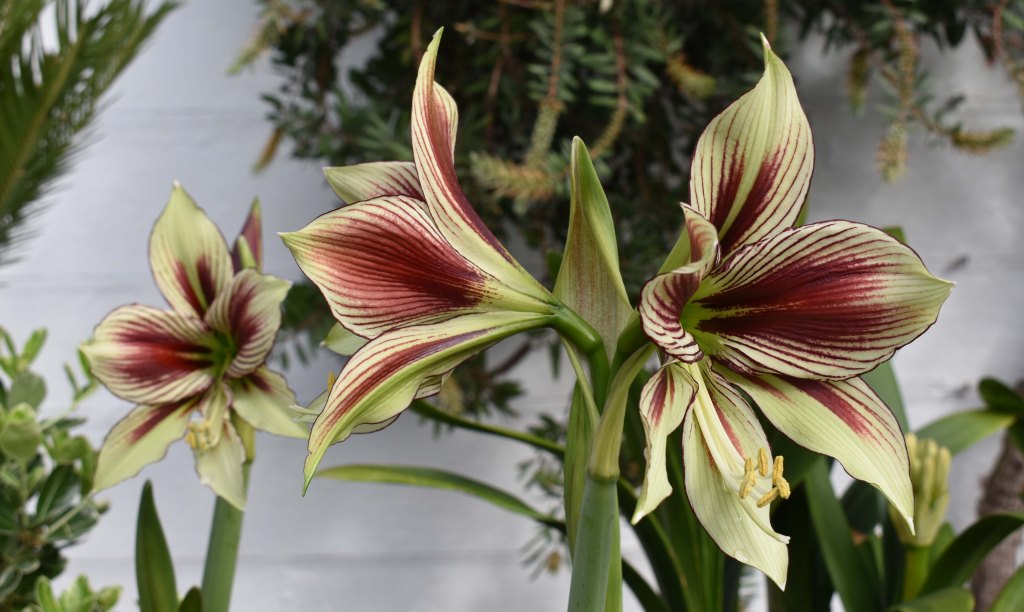
We’re all biding time just now; waiting for warmer weather; waiting to see how the virus responds to lockdowns and vaccines; waiting to pick up our lives again. It’s no different in the gardens; the gardeners all long for normality. But whilst many projects are going ‘full steam ahead’ (see last post), biding time is a yearly occurrence as the glasshouses fill with cuttings, seeds and half hardy plants all needing space. Room has to be made too, for hundreds of plugs already ordered and expected shortly. With frosts possible into early June there can be no hurry to put plants out.
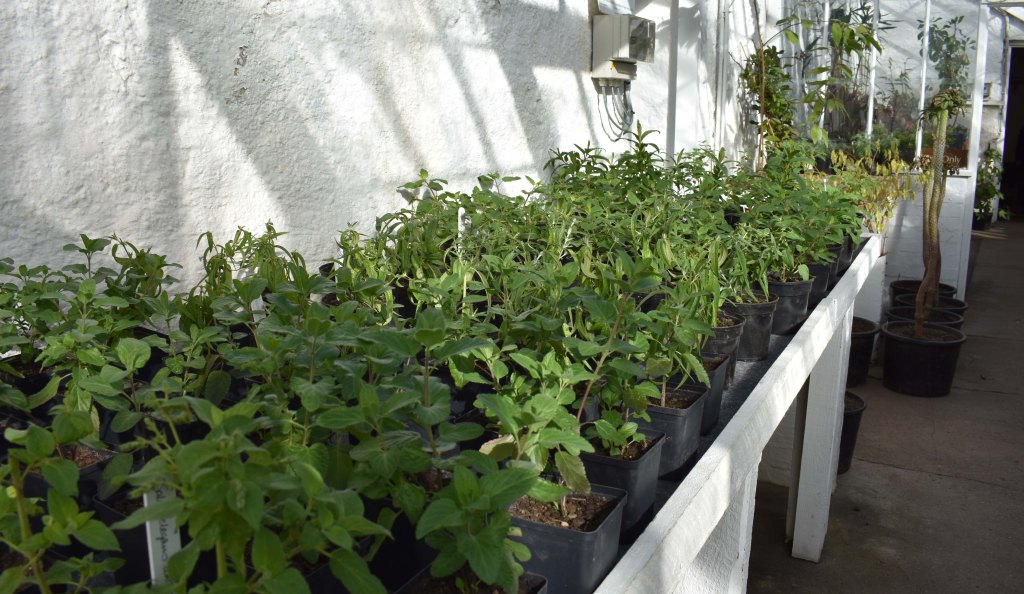
But the gardens are on their way: I can see the blue chinodoxas turning the bare soil to blue; the daffodils stirred by March’s ‘breezes, loud and shrill’; the hellebores nodding elegantly and buds beginning to burst all over the garden. Bees are on the go and bullfinches are enjoying the Lonicera maackii buds in Camel Garden.

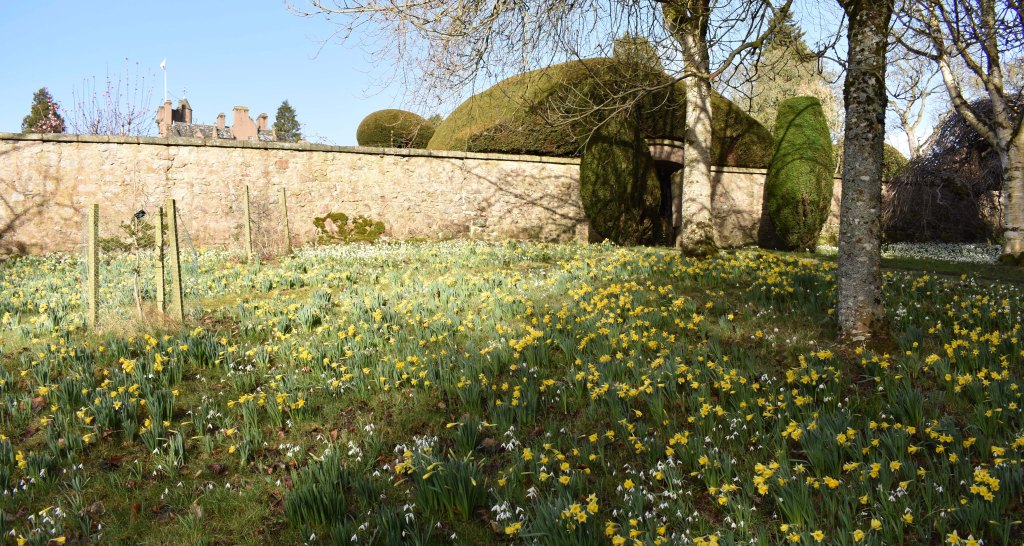
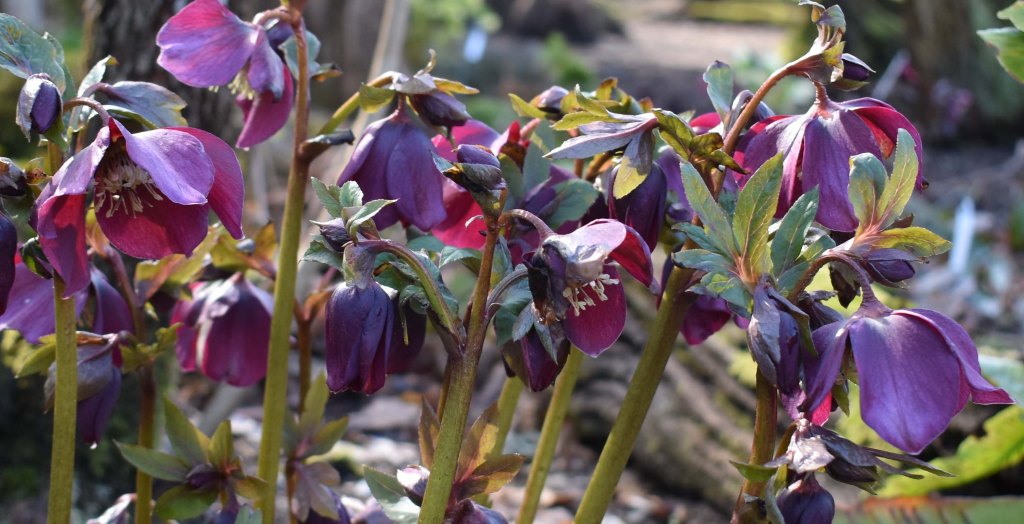
In the glasshouses I take more note of the seeds and cuttings – knowing that I will need to recognize them when they begin to put on a show. Ricinus, sweet pea and cerinthe seeds are familiar, but others like Beaumontia grandiflora, Jovellana punctata, Musa glauca and Caesalpinia gilliesii I need to look up on the internet. Beaumontia I find is a glasshouse climber with fragrant white trumpets – from Nepal and known as herald’s trumpet; Musa glauca is a snow banana – sometimes hardy enough to survive the winter outside – from China, Nepal and India; Caesalpinia is a hardy shrub from Argentina and Uruguay. The flowers are yellow with long trailing red stamens; exotic on any account. Though I didn’t recognise the name Jovellena punctata, I did recognise the flower for it used to grow beside the glasshouse door – a delicate small flower with a speckled hood. Lots here to anticipate.
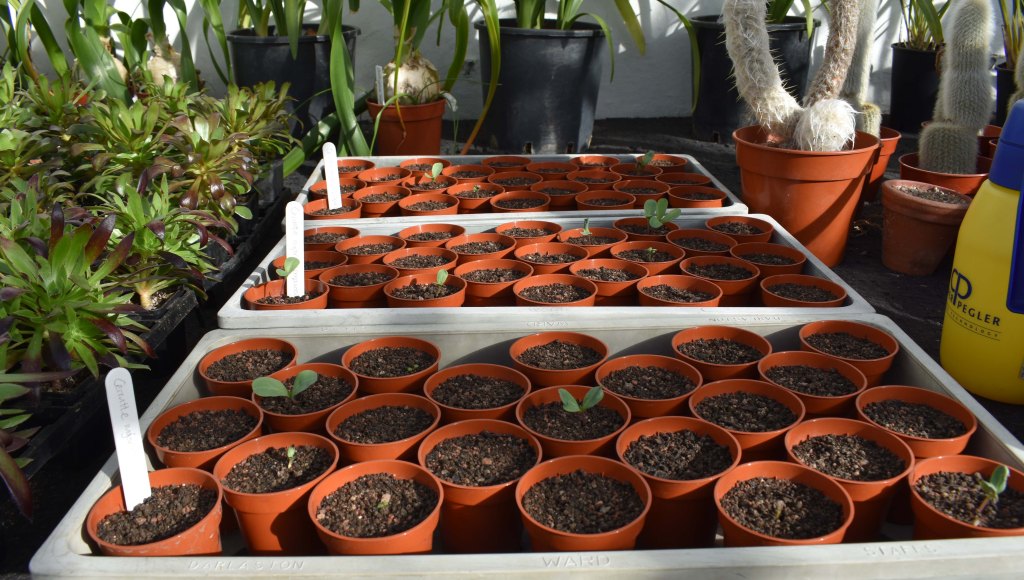
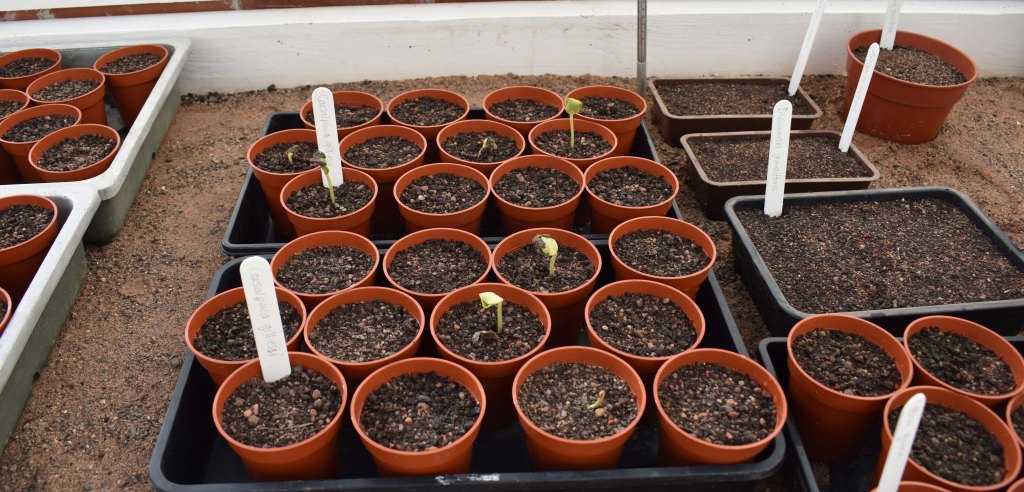
Some labels show that it is Crathes seed that is sown – as in ‘Echium russicum collected 24.09.20’. There is bottom heat of 20 degrees Celsius for the specialities and the light provides extra heat for some of the exotics such as the bananas. Unfortunately the light, which is old, is rather temperamental; time will tell.
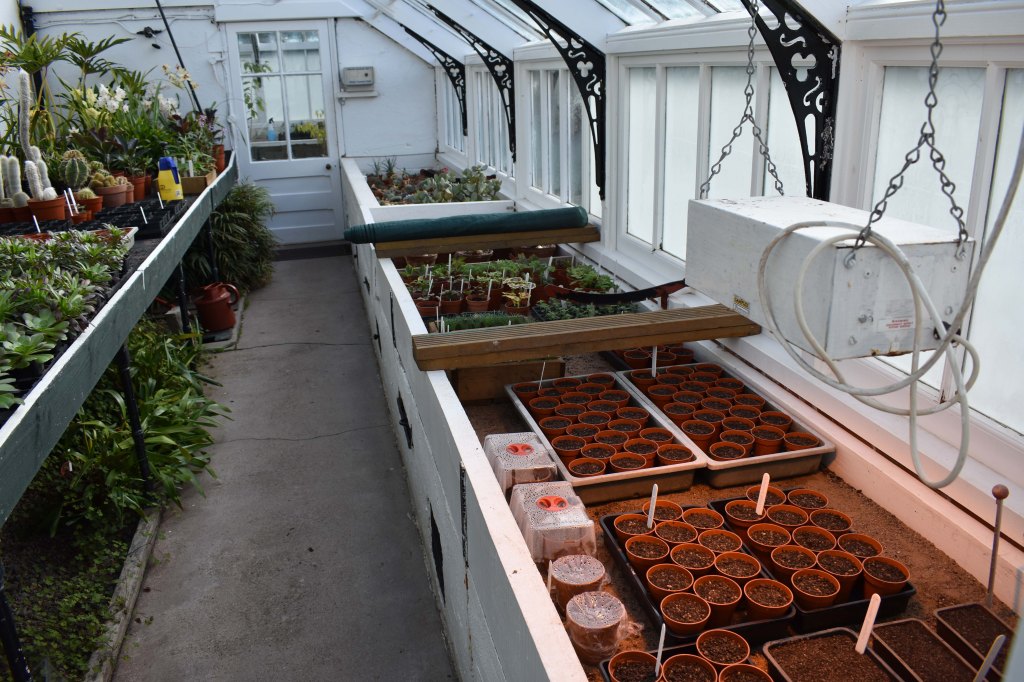
Amongst the many cutting I see those of the tender plants on the Aviary Terrace – a necessary insurance in case of hard winters: Crinodendron patagua, Buddleja myriantha, Correa backhousiana, Ozothamnus rosemarinifolius, Luma apiculata and Stachyurus praecox. The stachyurus against the Aviary Terrace wall is just about in flower. It has not been bothered by the hard frost.
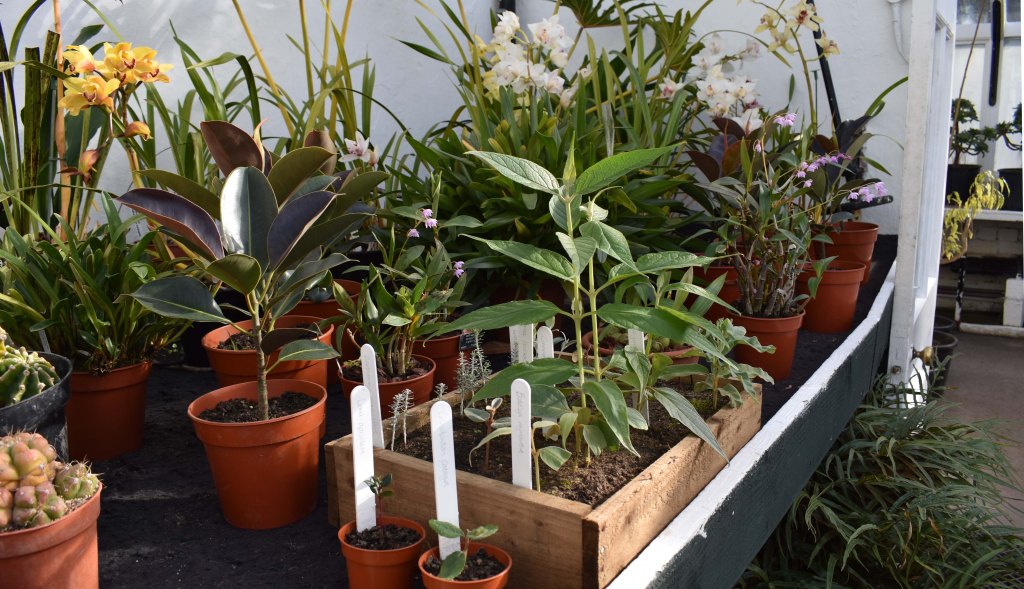
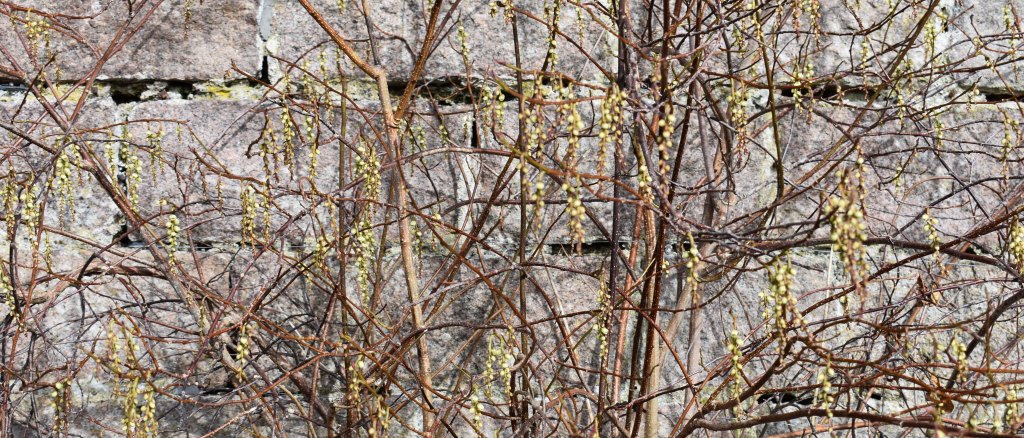
Further along are fuchsias, pelargoniums, abutilons and other delights.
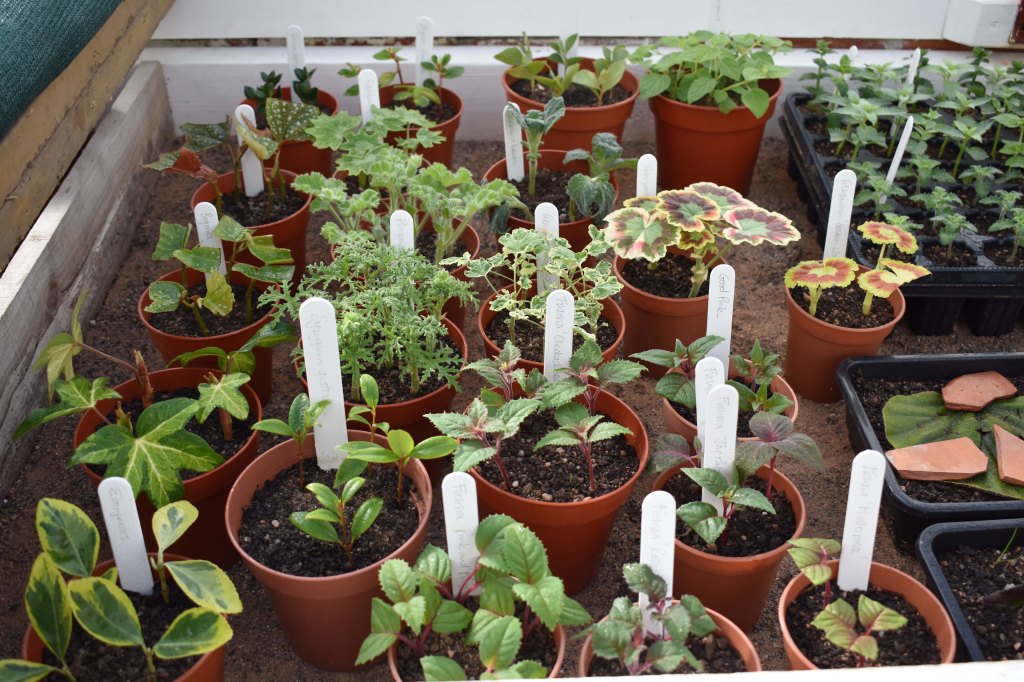
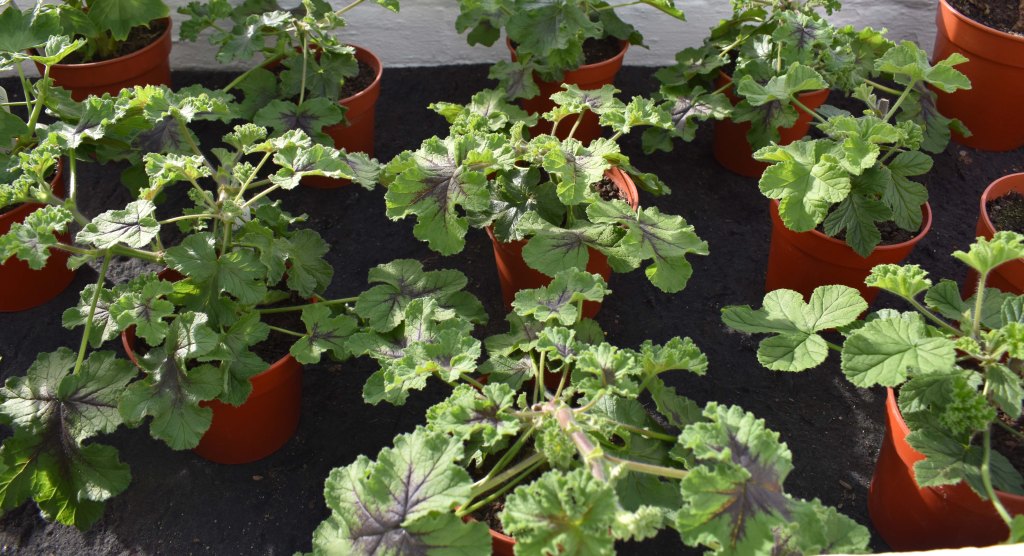
Tim has been helping Jo in the glasshouse and clearing the cold frames in the yard as they get ready for an influx of plugs to grow on for the summer. Last year at this time James and Andy were left to cope alone. This year has a very different feel as everyone gears up for what we hope will be a successful, if a little delayed, season.
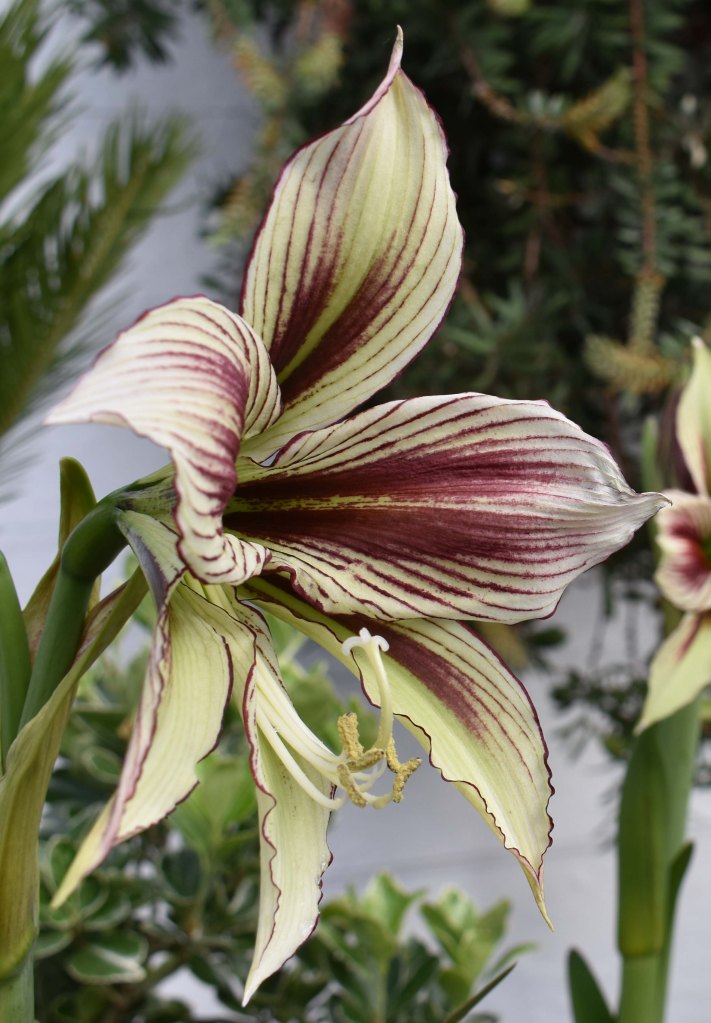
In the show houses Amaryllis papillio is looking rather splendid. Although visitors cannot go into the glasshouses at the moment they can walk beside the windows to enjoy the escaping jasmine and hyacinth scents whilst seeing much of the show. The hyacinths spent most of the winter in the old ice house/cistern. It’s not a pleasant job crawling on boards over the water to get the pots out because enormous cave spiders and their dangling egg sacs hang out here. Good for biodiversity though.
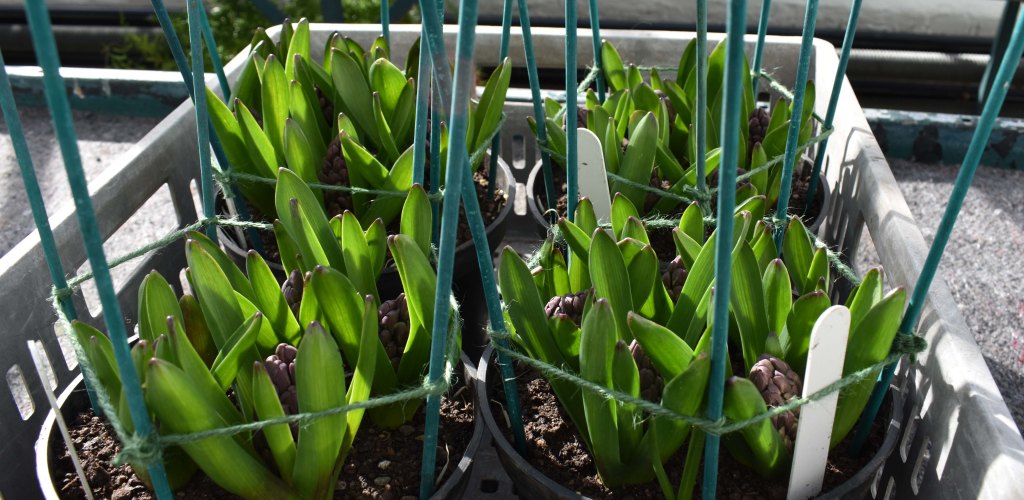
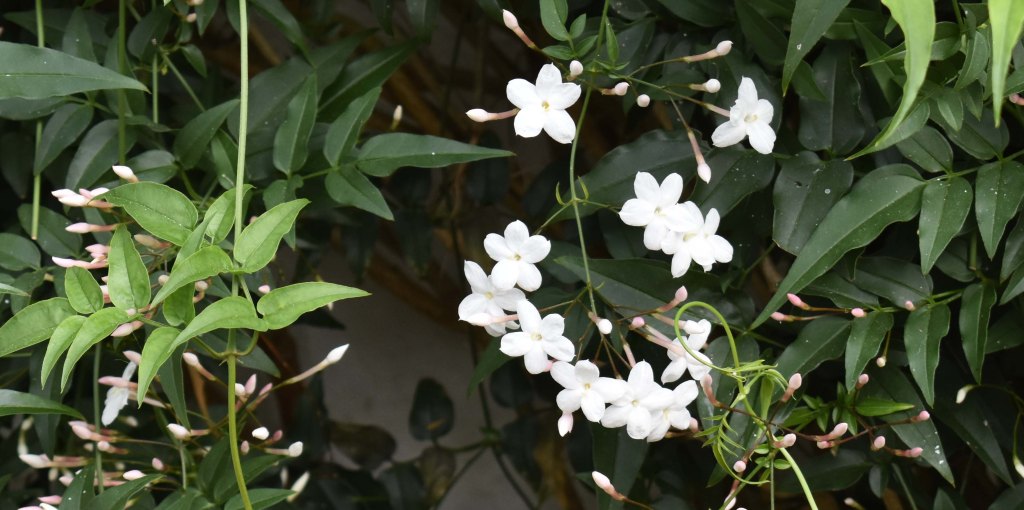
Outside, Steve and Mike have been pulling out old stumps. They use a jack to help with the pulling. First they loosen the stump and cut the roots as best possible, then they put one end of the jack rope round a strong structure – usually a large tree trunk – and the other end round the stump. The jack in the middle is levered backwards and forwards to pull the ropes tight until the stump is eased out of the ground.
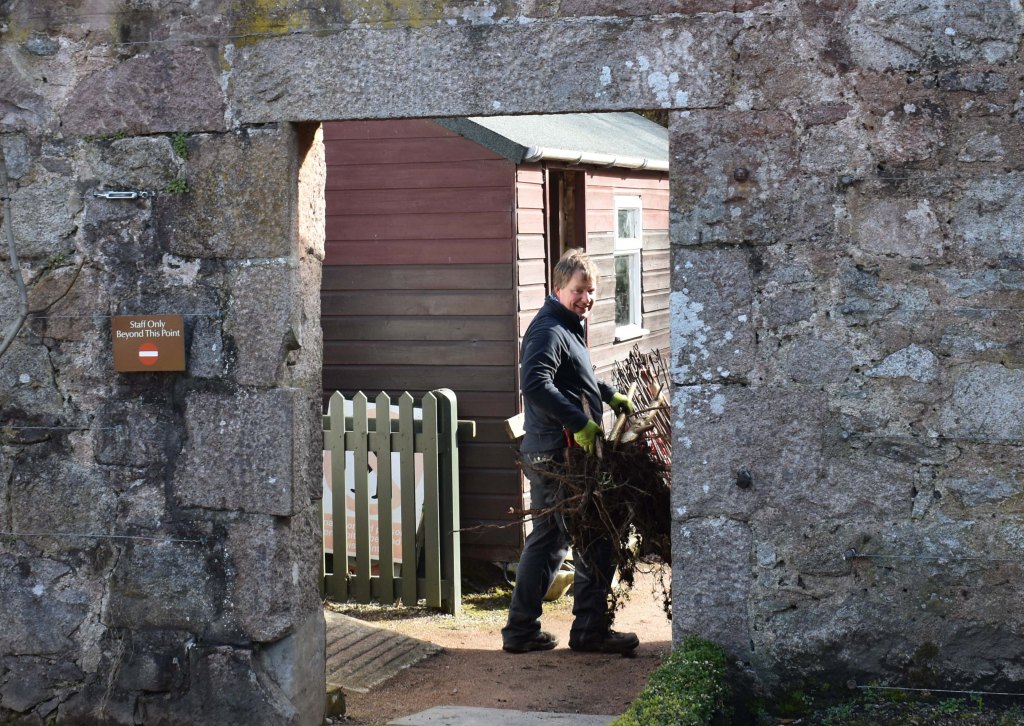
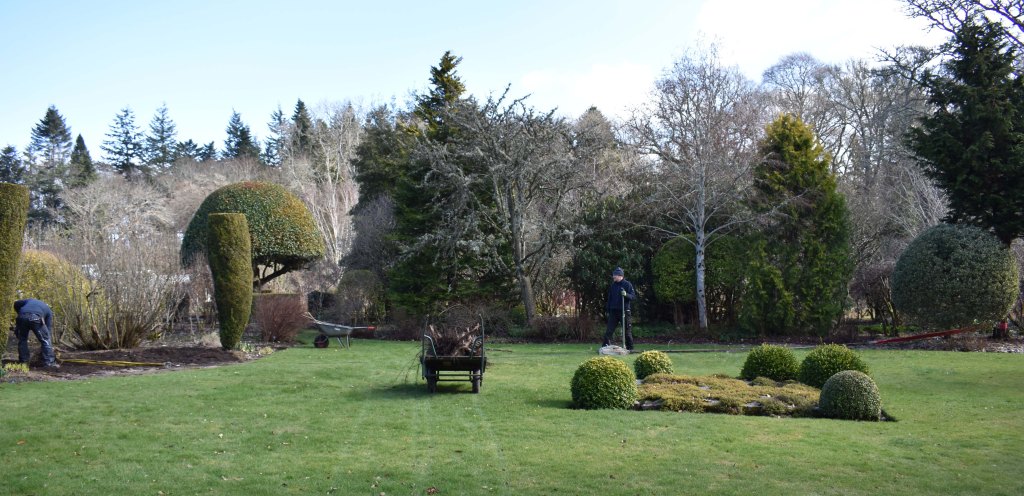
One of the Portugal laurels in the Fountain Garden had to be felled recently because the trunk was crumbling away, but the stump is too difficult to shift with the jack and a specially hired stump grinder will have to be used. Some of the Portugal laurels are in a very fragile state.
The hazel is doubly important just now – pollen for the bees and poles for the gardener – all sustainable. The substantial poles erected at the entrance to the Camel Garden are to support the sweet peas. In the doocot corner the large Aralia cordata that comes from nothing every year has been moved to the back of the area. James thinks it will move well – it’s a thug. A support of hazel twigs has been erected for its support. The Corylus avellana ‘Contorta’ is a mutation which arose in a Gloucestershire hedge in 1863. It is often called ‘Harry Lauder’s Walking Stick’ because he used a twisted stick. Harry Lauder used to visit Crathes – perhaps he saw this old hazel on one of his visits.
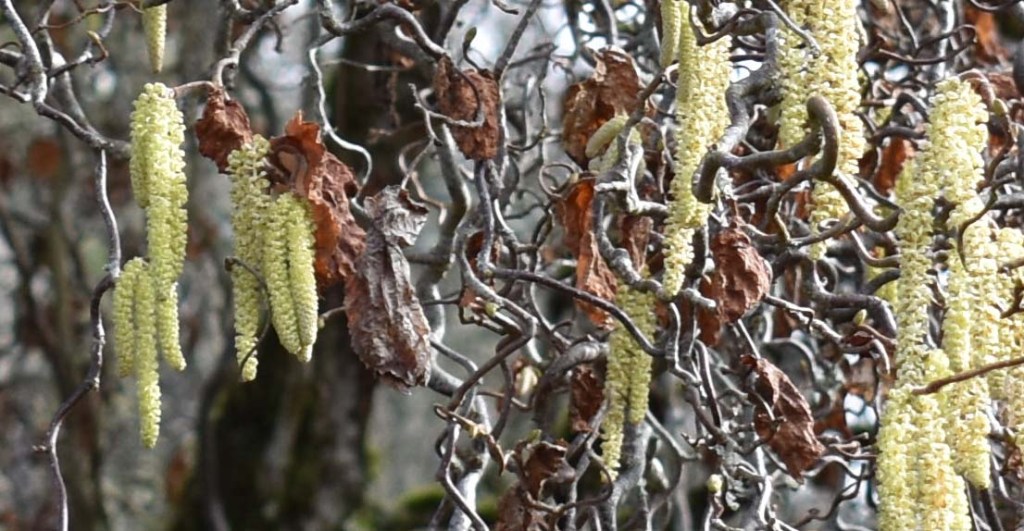
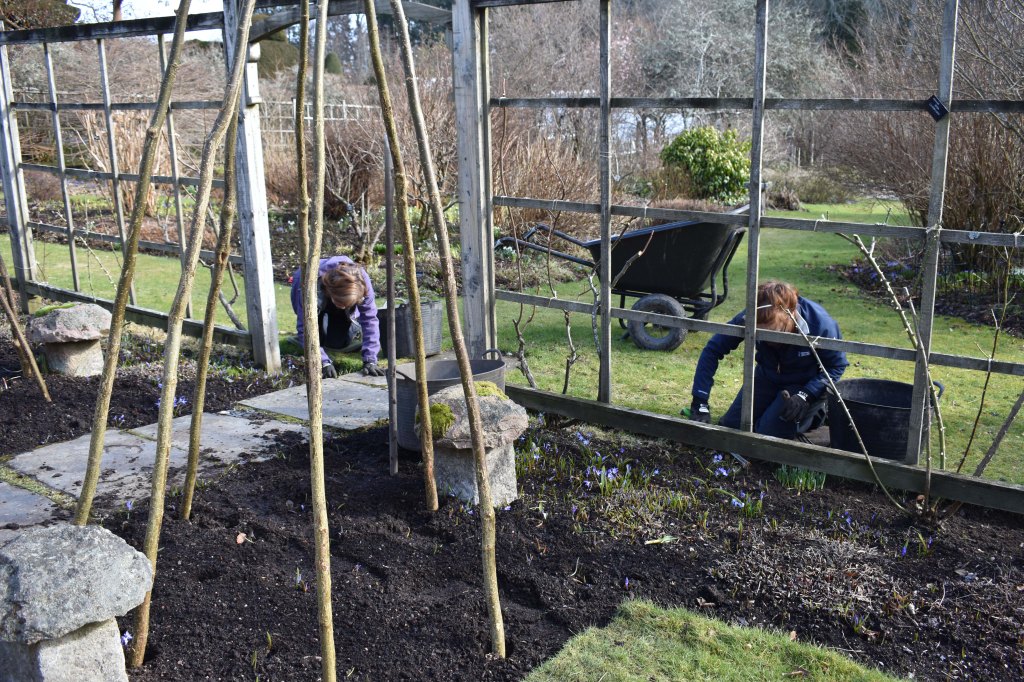
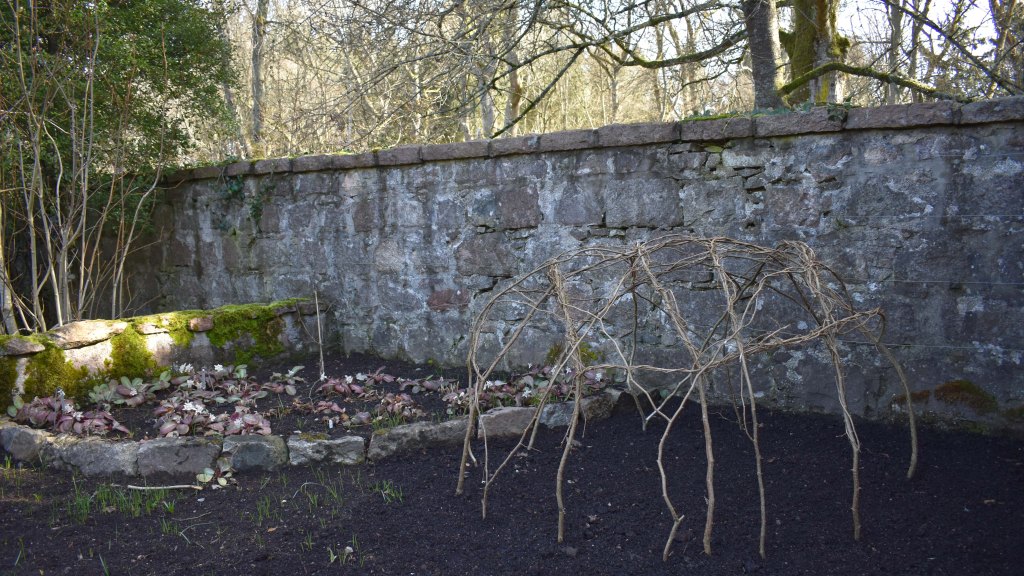
The volunteers are now back and have been busy weeding. They work in (socially distanced) pairs and are so glad to be out in the fresh air with company.
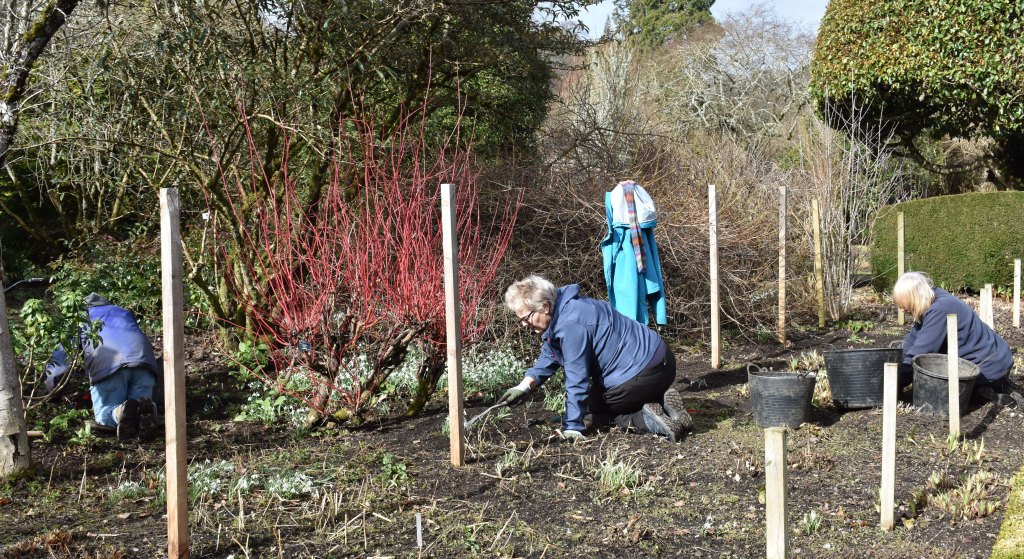
Two Victorian urns have been added to the paved area at the north end of the Croquet Lawn. They are of cast iron and are newly painted; what will be planted here?

I am always struck with the visual importance of the mosses in the winter. We see them everywhere and in great variety in the garden. Whilst mostly welcome, the mosses in the Croquet Lawn will have to be scarified out.
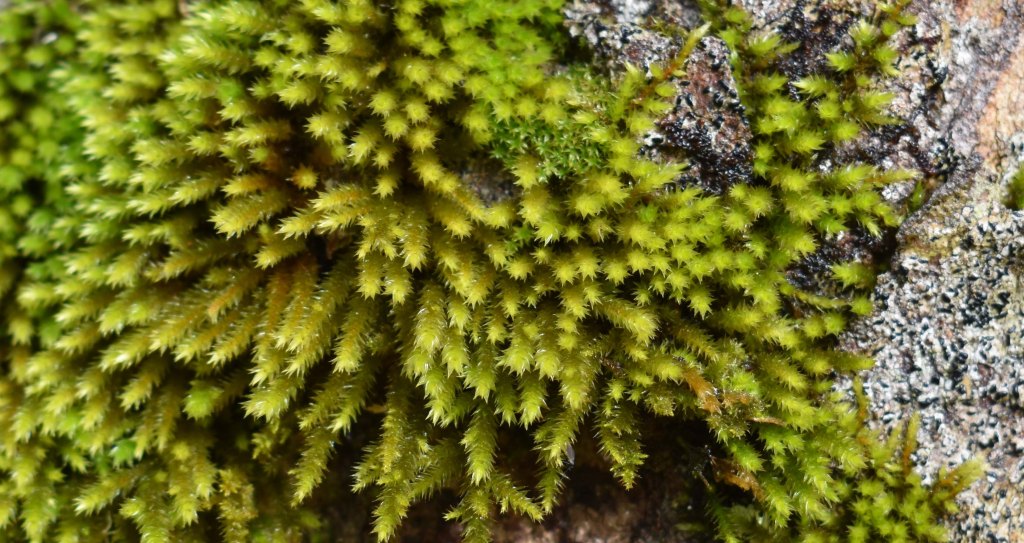
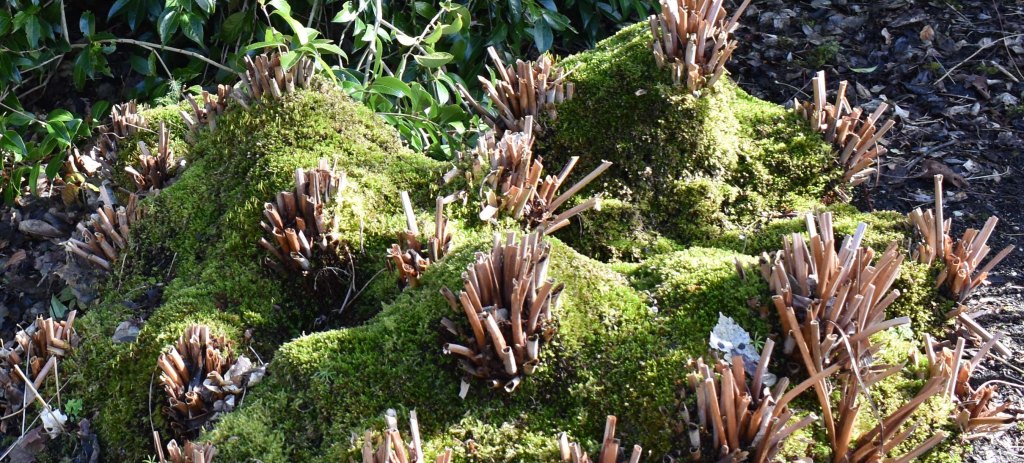
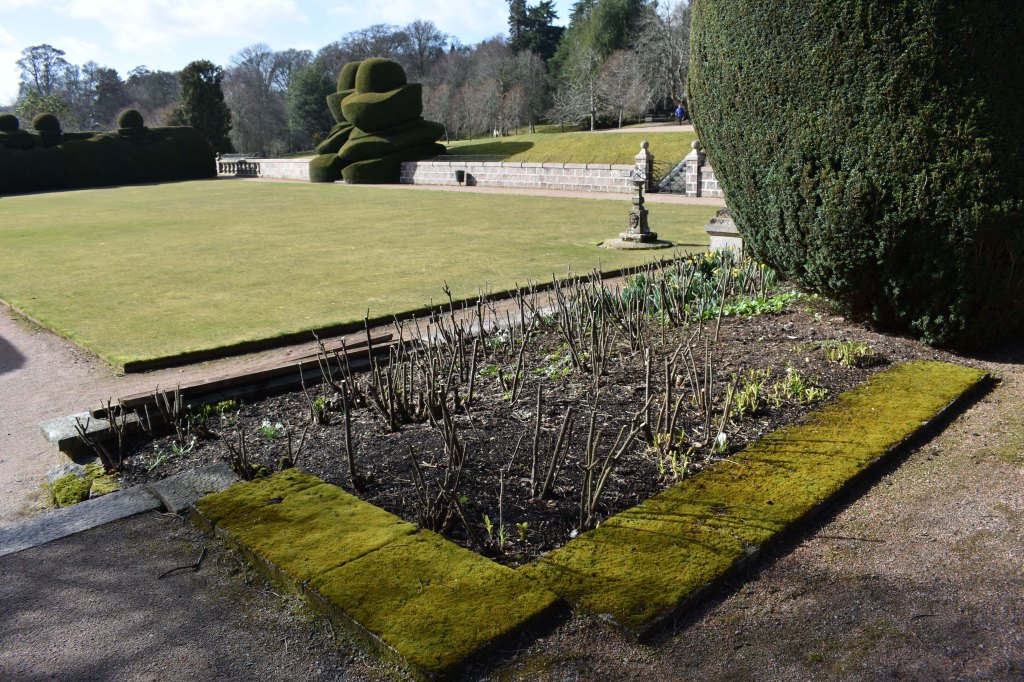
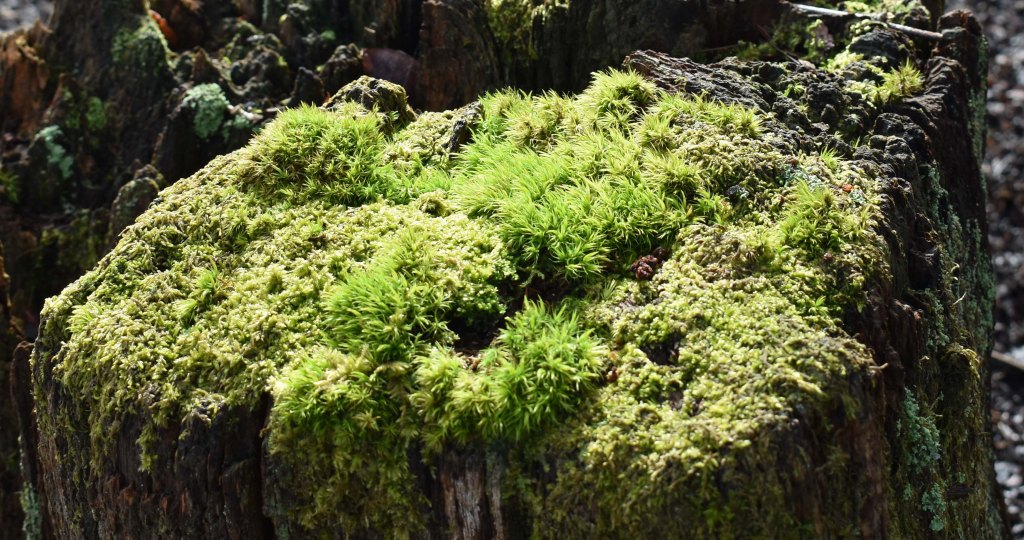
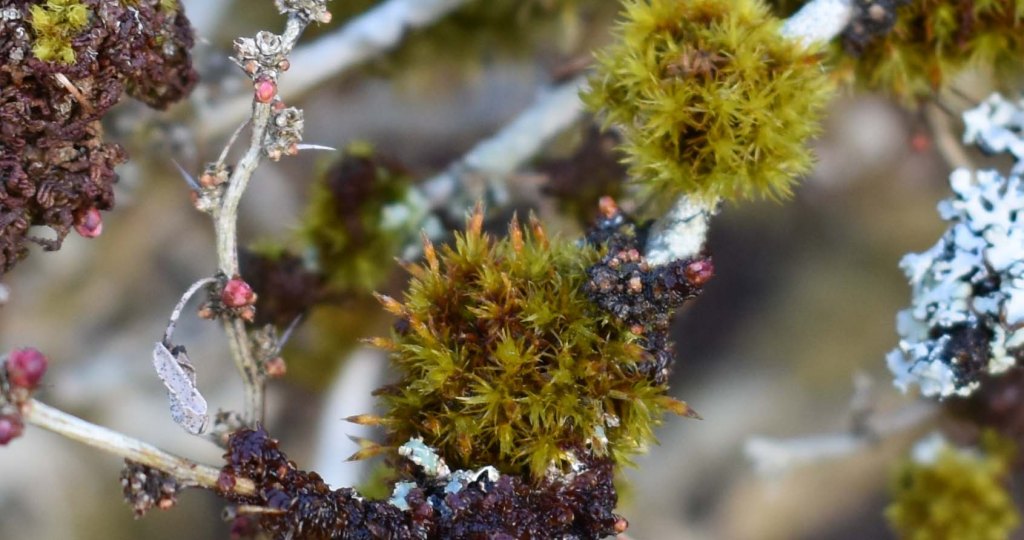
I have now been writing Notes from Crathes for over a year, though some of the time Lockdown has prevented my visits. Plants are bound to crop up again on my posts. To me they are just as welcome and re-writing about them reminds me, and maybe you, of the names. Pieris japonica ‘Rosalinda’, Hepatica transsilvanica and Iris stylosa (synonym unguicularis) ‘Mary Barnard’ are all flowering just now. The iris is shy and easily missed.
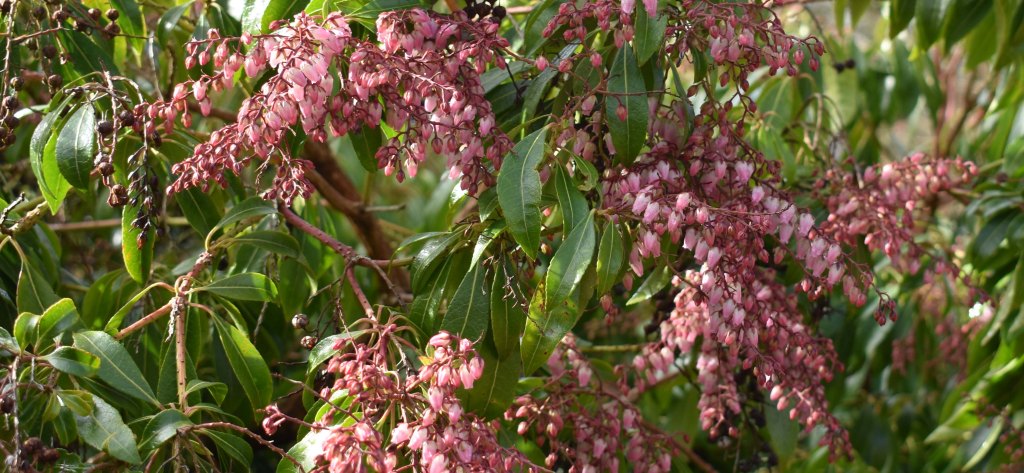
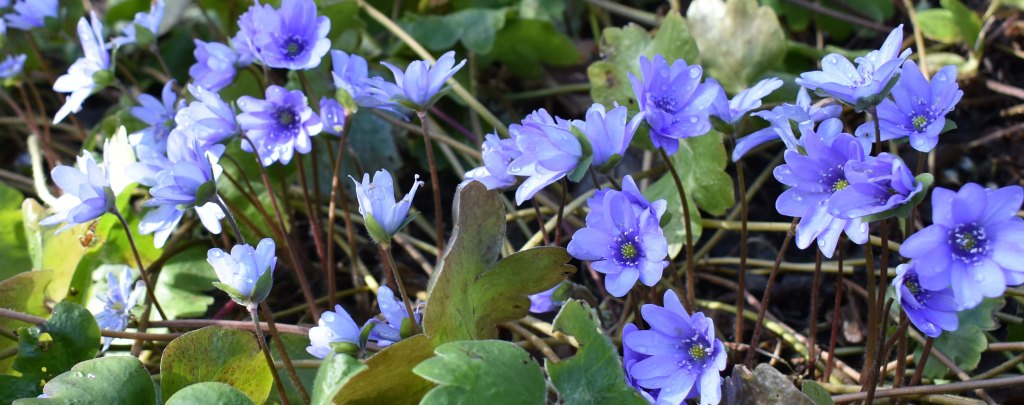
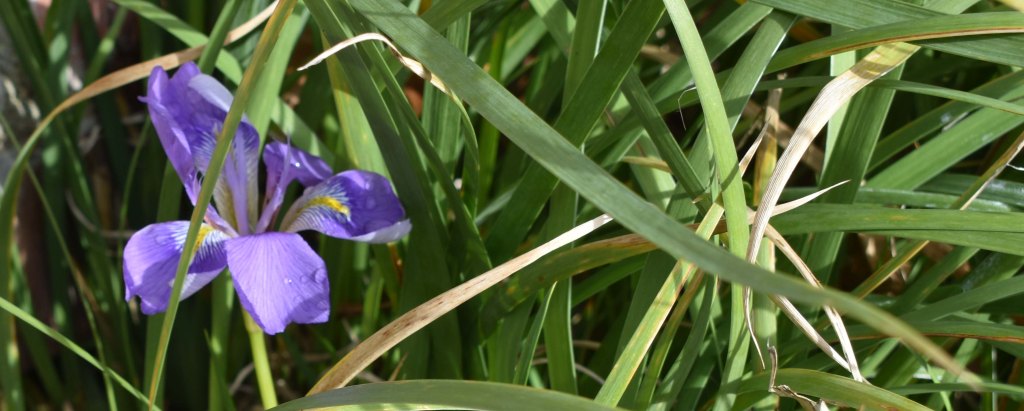
Outside the Walled Garden I can smell the Daphne Bholua hundreds of yards downwind of the viewpoint. It’s been looking good for about a month now.
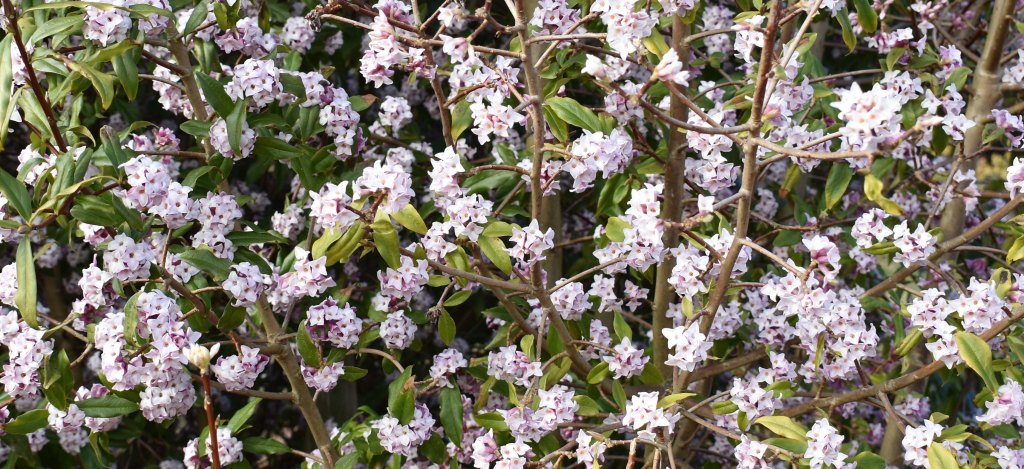
Further round I see that some shrubs have been taken out behind the Wildlife Garden. Towards the Conifer Grove some azaleas have been removed in front of the sequoiadendrons so that we can see the trunks of the three giants to advantage. The male cones are prominent on the sequoias just now.
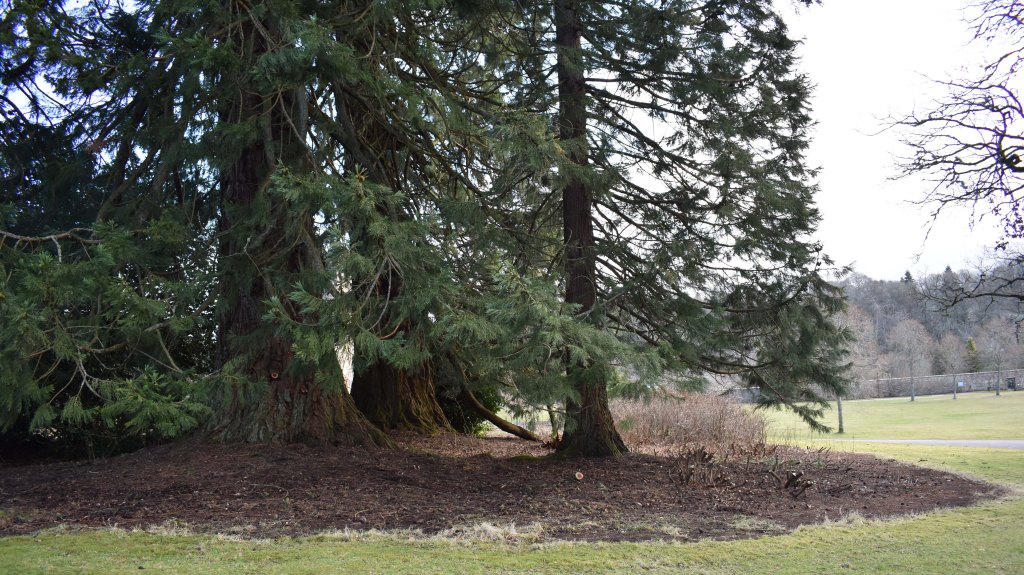
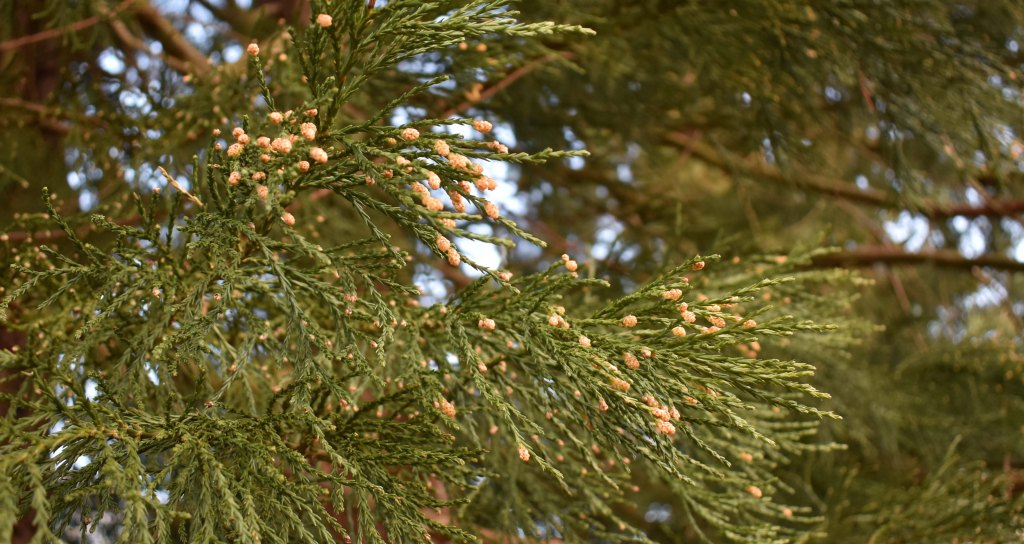
I write much of this on the equinox, the first day of spring – we can finally leave the winter behind. The weather remains variable: some days sunny and balmy, others not so. But the evenings stretch out, the birds sing and we know that gardeners everywhere are rejoicing at the promise of a new season. The Crathes garden remains open Monday to Friday 10am – 3.30pm meantime. Come and visit if you can and catch the blue chinodoxa and scilla carpet.
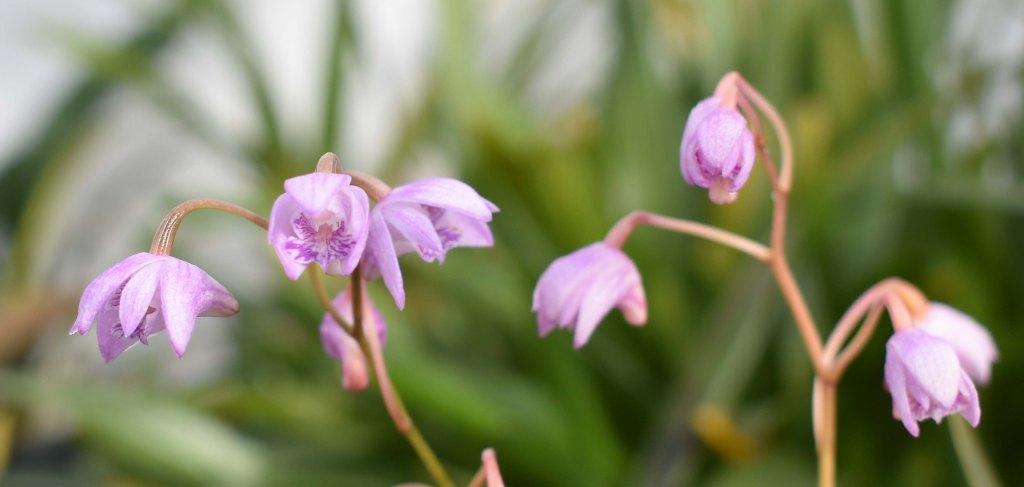
Take care
Goodness, that was a lovely journey through the plants and the coming Spring. If these pictures are any indication, I think the garden’s beauty will more than make up for any time lost during the lockdowns.
Do you ever pick up plants that you have very little information on, just to figure out how you can make them work? Everything seems so well planned out!
LikeLiked by 2 people
Thank you Scott Dee. There is quite a lot of experimentation goes on trying new seeds and plants, especially with the changing climate. And sometimes mystery plants turn up in the garden. On occasion it has taken a few years to come up with the answer. It’s all part of the fun.
LikeLiked by 2 people
Thank you again! We have lots to look forward to!
LikeLiked by 2 people
I Love Scotland!
Luiza Nascimento
Rio de Janeiro Brasil
LikeLiked by 2 people
Maybe someday you’ll be able to visit.
LikeLiked by 1 person